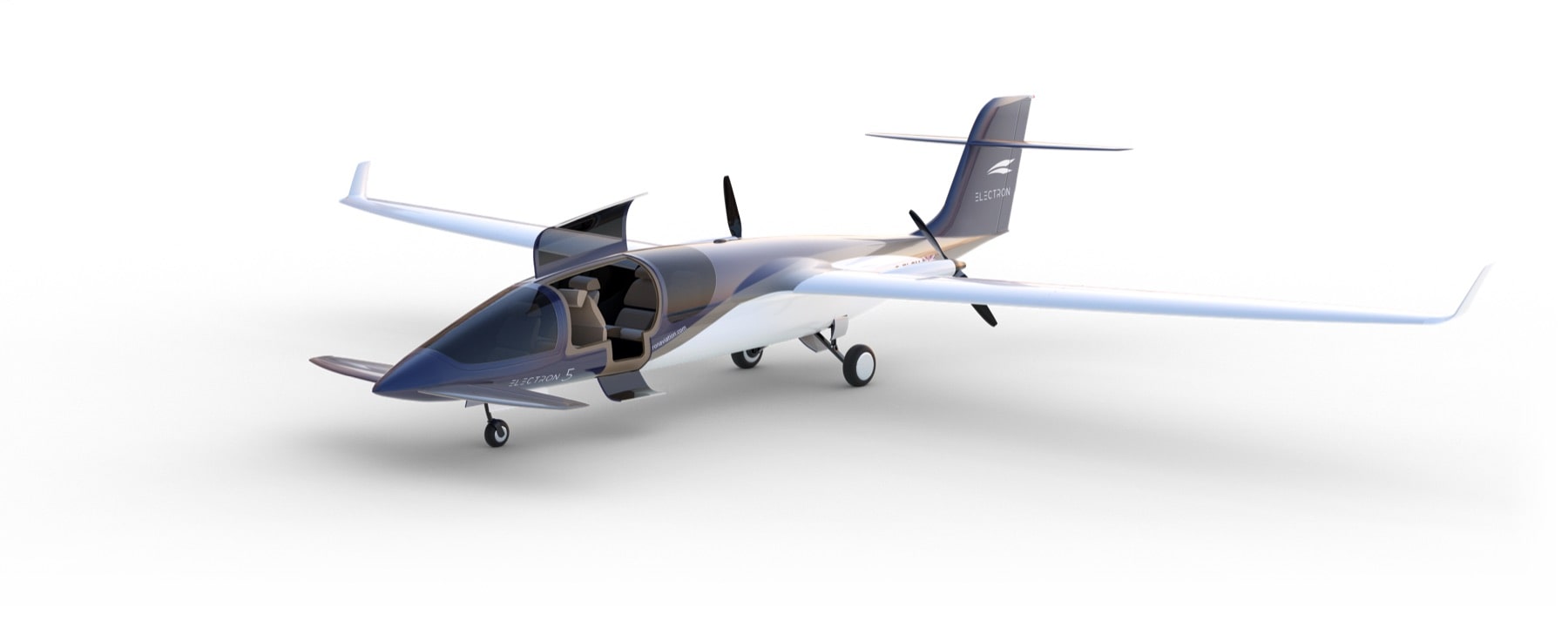
A resurgence in regional air mobility (RAM) could revolutionize short-haul travel, driven by innovative technology, sustainability focus, frustration with existing transport options, and the emergence of mobility-as-a-service. Research by McKinsey Aerospace & Defense shows that the RAM passengers market potential by 2035 is estimated at $75-115 billion, representing 300-700 million passengers annually.
Over 50 companies are investing in RAM start-ups and developing new aerospace technologies, including green propulsion, digitization, and autonomy. Utilizing underutilized regional airports, RAM aims to provide a more economical, environmentally friendly, and equitable transportation model for distances between 150-800 km. Key enablers for RAM market growth include seamless customer experience, mature aircraft technology, public acceptance, new energy infrastructure at small airports, and a substantial increase in the regional fleet size.
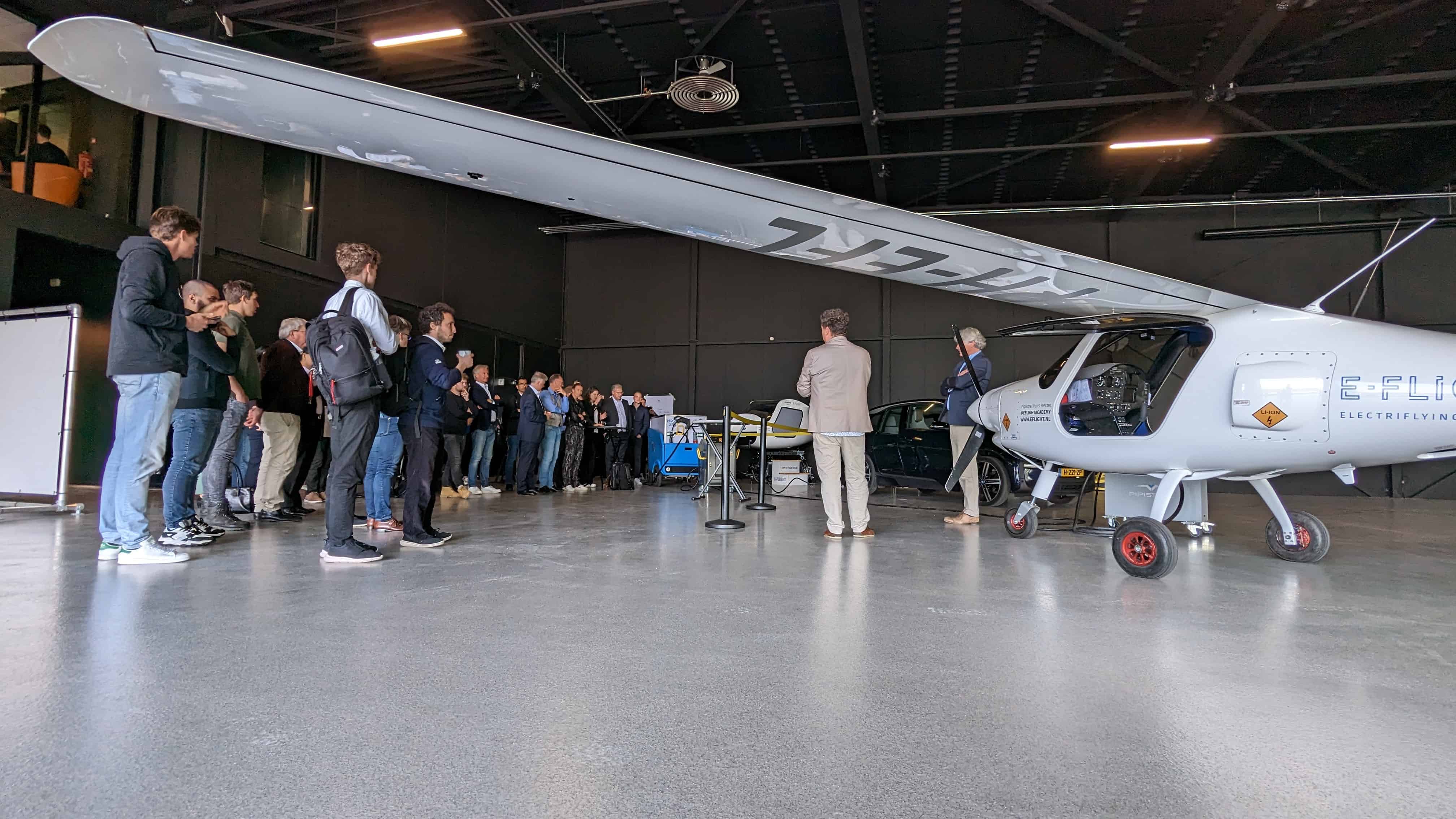
The trends suggest that RAM’s time has come, according to the report. “The world may soon discover this revived form of air travel, which is more sustainable and capitalizes on underutilized infrastructure that we already have today. Re-energizing short-haul air travel will help increase equity for rural communities and stimulate economies beyond major metropolitan hubs. Material uncertainties remain about RAM’s future, but a discernible path forward exists to support strategic decision-making and to create value in a market whose time has come.”
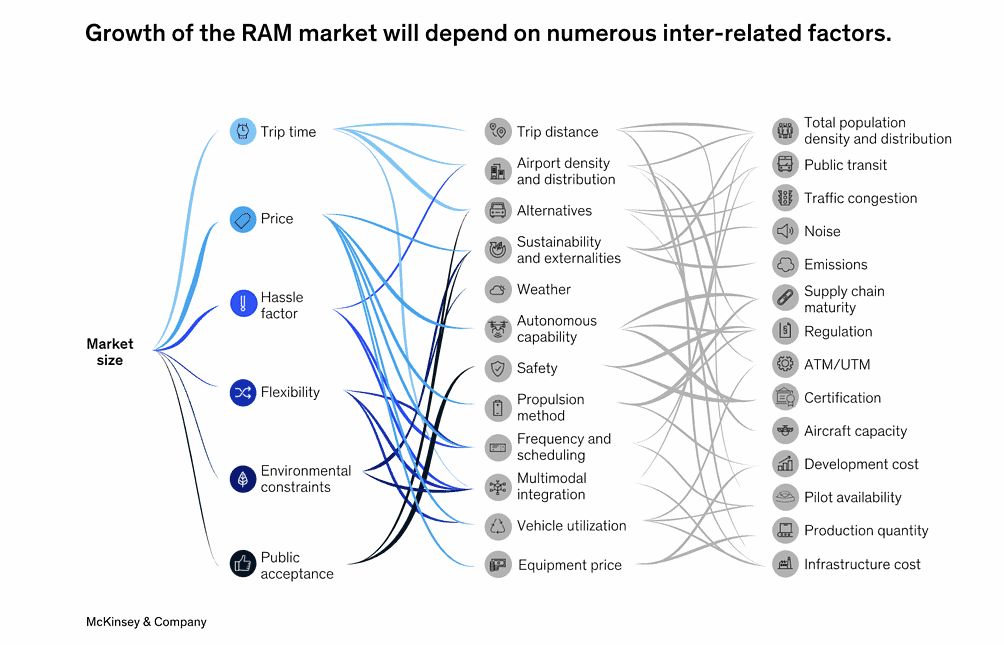
Transforming the Industry with Sustainable Propulsion Technologies
The results of the McKinsey study match with research by Roland Berger. Despite a longstanding decline in the regional aviation sector, investment in new, sustainably powered regional aircraft has skyrocketed to more than USD 3 billion in the last two years, the report says. “One key reason: short flights are well suited to trialing important technologies like electric, hydrogen, and hybrid propulsion. However, there is still much to be done to exploit the full potential of this new generation of mobility.”
Industry experts and leaders are working on overcoming technological challenges to achieve widespread adoption and make short-haul air travel more eco-friendly and cost-effective. Nearly 400 development projects worldwide focus on alternative propulsion for regional aircraft, most centered around electric or hybrid systems.

Electric propulsion is considered most suitable for short-distance urban air mobility (UAM) and RAM markets, while hydrogen propulsion offers a greater range but is limited by the technological constraints of fuel cells and batteries. As the industry advances, these new propulsion systems will play a critical role in reducing the environmental impact of aviation and meeting global sustainability goals.
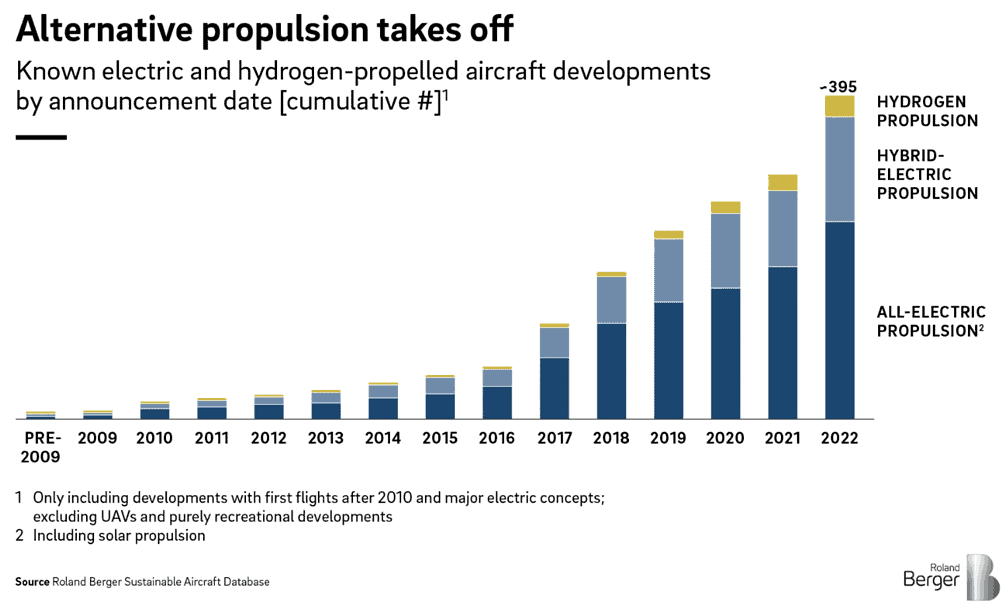
Pioneering Projects and Companies in Regional Air Mobility
Various projects and companies are leading the charge in regional air mobility development. For instance, the advanced air mobility market encompasses many vehicles, from small unmanned aerial vehicles to regional aircraft for 19 or more passengers. RAM use cases include chartered trips, cargo transport, feeder flights, and trial periods for new routes.

Interestingly, the long-distance RAM segment dominates, with 35% of all projects focusing on aircraft for ranges greater than 300 km but fewer than 19 passengers. This is surprising given that the majority of funding in 2021 went to UAM or short-distance RAM sectors. However, investors are betting on more established short-distance UAM projects, intending to widen their scope once the technology is ready and the market matures.
Government Policies
Government policies and regulations play a crucial role in implementing and adopting sustainable propulsion technologies in regional air mobility. As governments and the public become more focused on sustainability, new initiatives and policy frameworks are being developed to lower the climate impact of aviation. For example, hydrogen propulsion for regional applications could deliver ranges greater than 2,000 km, covering 70% of all European transport capacity.
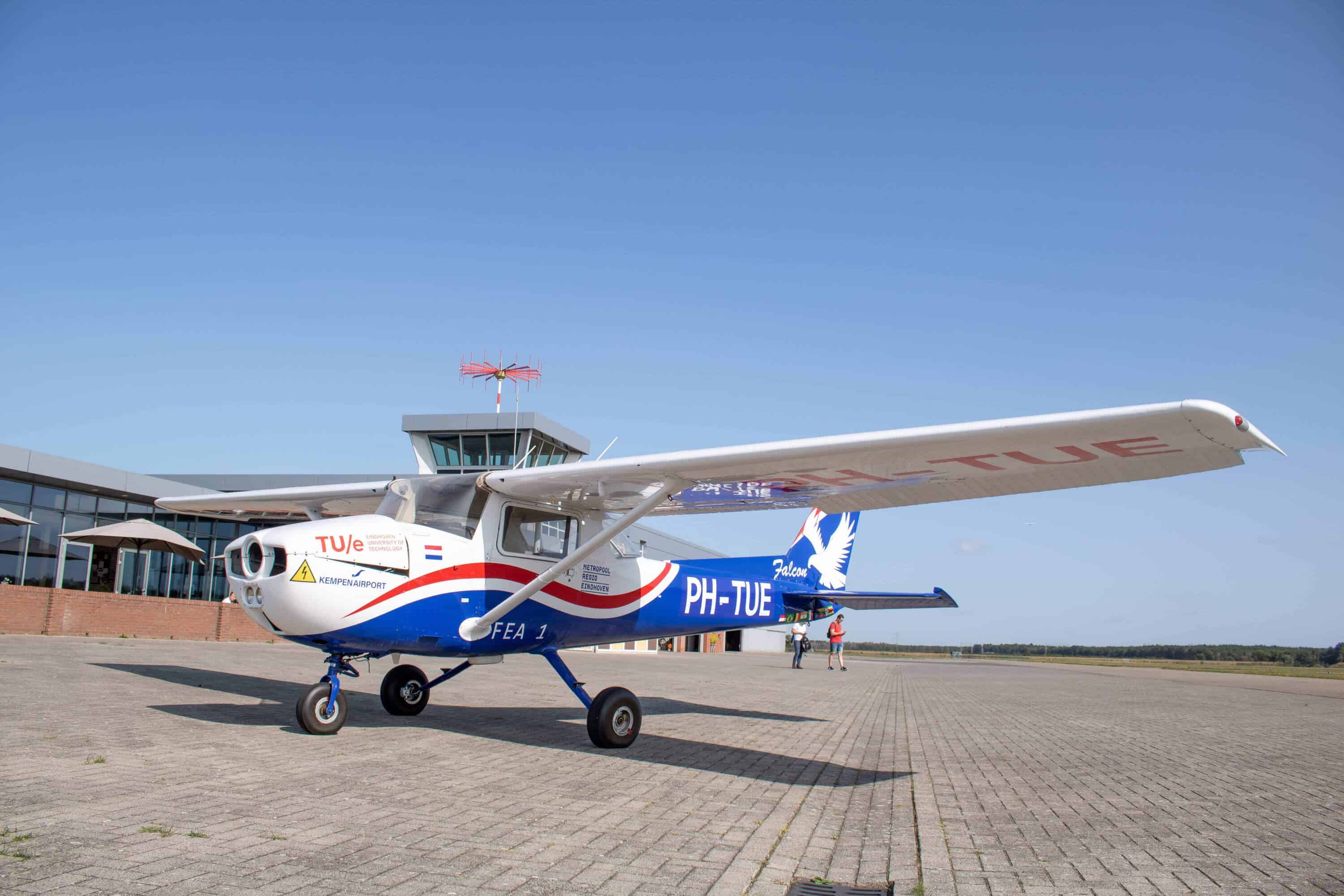
However, several challenges must be addressed before RAM can become an attractive travel option, “potentially resulting in a $50 billion market” (less than half of the upside estimate by McKinsey). These challenges include public acceptance, certification for new technologies, infrastructure investment (such as electric charging stations, integration with ground transport networks, and booking platforms), and the availability of renewable energy at competitive prices.
Emerging Scenarios for the Future of Regional Air Mobility
Given the current state of the aviation industry and technological advancements, there are three potential trajectories for the RAM market by 2050:
- Base Case – $25 billion market with 4% CAGR long-term aviation market growth and higher renewable energy prices.
- Best Case – $50 billion market with stable renewable energy prices and RAM ticket prices competitive with trains and cars.
- Downside Case – $10 billion market with limited sustainable energy, higher energy prices, and aviation market growth decline.
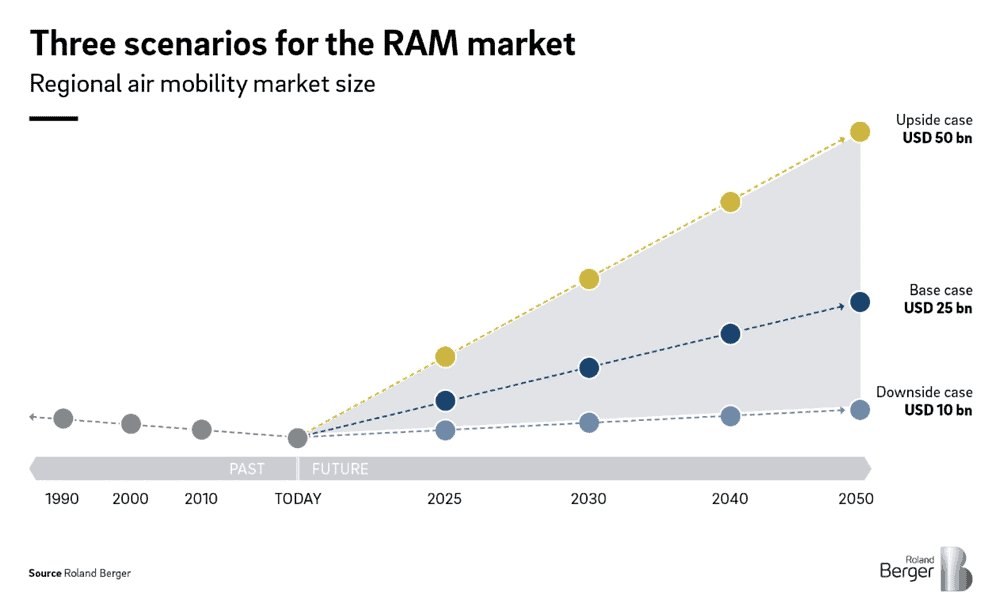
McKinsey is even more optimistic:
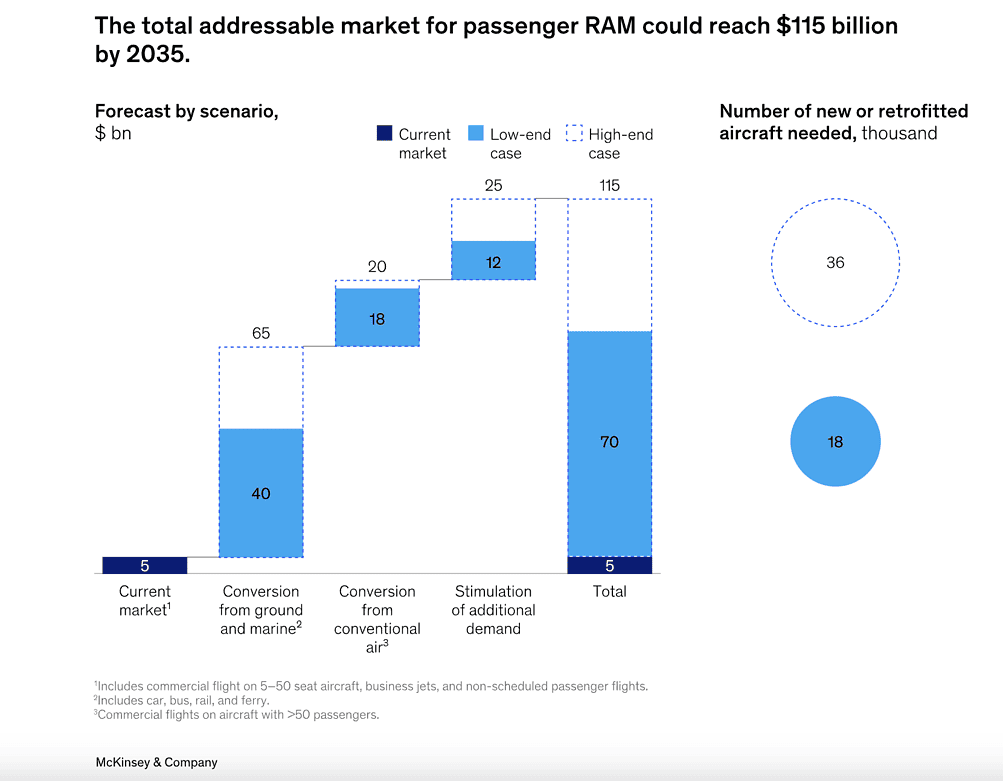
Regardless of the specific outcome, it is clear that regional air mobility has the potential to transform short-haul travel and drive the aviation industry toward a more sustainable and efficient future.

